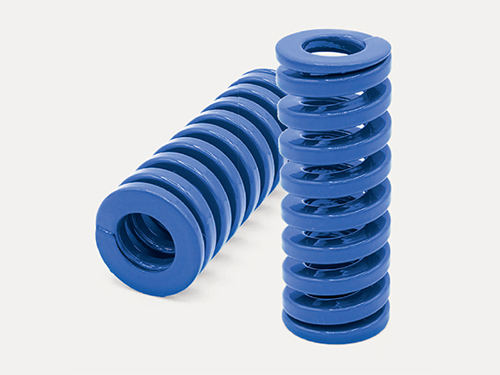
Compression spring can be divided into static spring and dynamic spring according to the running state. Static spring refers to spring with limited vibration times during service, such as safety valve spring, spring pad, scale spring, fixed load spring, mechanical spring, watch spring, etc. Dynamic spring refers to springs with more than 1×106 times of vibration during service, such as engine valve spring, vehicle suspension spring, shockproof spring, coupling spring, elevator buffer spring, etc. Static spring material selection mainly consider tensile strength and stability, dynamic spring material selection mainly consider fatigue, relaxation and resonance performance.
According to the load condition, the spring can be divided into three states: light load, general load and heavy load. Light load refers to the spring that bears static stress, low stress and small deformation, such as spring for safety device, spring for vibration absorption, etc. Design service life 103 ~ 104 times. General load refers to the design life 105 ~ 106 times, in the vibration frequency 300 times /min condition of the use of common spring. Within the allowable stress range, the service life is guaranteed to be 1×106 times. The lower the load stress is, the longer the service life is.

The heavy load of the compression spring refers to the spring that works for a long time and vibrates frequently. Such as valve spring, spring air hammer, press, hydraulic controller, its load is higher, often used in about 10% lower than the allowable stress, service life is greater than 1 x 106 times, usually for 107 times the cross section shape of spring steel wire is usually circular, rectangular, square, and oval shape, finished steel wire is commonly rolls delivery, also have according to the article direct delivery. The special requirements for steel wire are different when the compression spring is used in different environments.